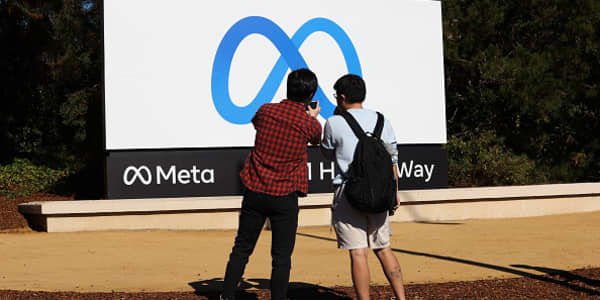When the shelter-in-place orders were first enacted, we sprinted to get our systems running to enable remote work. I've heard people describe our current remote work state as a marathon, but I think our situation is more like a triathlon that requires proficiency in multiple disciplines and a mastery of many technologies.
The industry's current remote work mode, while functioning, is less efficient than it can be, and IT leaders have a responsibility to figure out the best ways to enhance workflows and operate efficiently. Like juggling a swim, bike, and run, we need to manage multiple skill-sets, pace ourselves, and prepare to pivot to account for unexpected circumstances.
Here's what I'm focused on when it comes to how we can best operate right now.
Context switching and worker productivity
Context switching refers to shifting energy and focus on one work task to another unrelated one, and it has the potential to hinder productivity. During a triathlon, athletes have to context switch, staying engaged in the activity of the moment while simultaneously anticipating the next leg of the race. Triathletes who don't train enough in advance often find they spend too much time in the "transition zone" and waste valuable time and energy on switching contexts, or activities. Similarly, if we don't adequately prepare for context switching on our teams and reduce the amount of time needed to move from one item to the next, we risk decreased productivity and wasted energy.
We now understand the possibility of a "death by a thousand cuts" phase in our remote workers: we could accidentally create a mode in which people regularly context switch, always changing from one work mode to another, leading to high energy costs. We must figure out workflows involved in context switching and look to new technologies to streamline. For example, we can predict the sorts of tasks involved in context switching and think about optimal interaction design associated with those tasks. We can leverage machine learning and natural language processing tools to automate them. Unlike in sprint mode, when we made those changes manually and had to do it fast, we now can take time and figure out how to leverage machines to change from mode to mode.
Automation can help with common IT issues
On my team, we've done a lot of scenario-planning to get ahead of potential remote issues and bring on automated solutions when we can. In the context of both your workplace setup and a race, having a plan to address potential problems that arise is critical. In a triathlon, scenario planning is how an athlete accounts for unexpected circumstances during a race. It might be raining unexpectedly, or you might get a flat tire on the bike route — and knowing how to move past an obstacle is critical.
We're using our own products built for remote work — specifically, our multi-site disaster recovery (DR) solution that leverages automation technology to reduce unplanned outages and protect our data. But our automation tool usage also goes far beyond our own offerings. One tool called X-Bot listens to employees' conversations in certain Slack channels dedicated to asking for help, and it takes care of those tasks. For example, if an employee is now using a VPN for the first time while remote, we can instrument XBot to teach the employee how to connect to the VPN, troubleshoot problems, and install recommended solutions. Leveraging automation to better prepare and resolve problems quickly should be top of mind for every leader.
IT departments can get lost in creating grand plans with multiple steps. But with modern technology, we can accomplish a lot with small changes. Find a few small areas where people are continuously challenged and streamline those.
IT departments can get lost in creating grand plans with multiple steps. But with modern technology, we can accomplish a lot with small changes. Find a few small areas where people are continuously challenged and streamline those. In a race, even a slight repositioning in your posture during the swim can help conserve energy for your upcoming run or bike.
For example, changing your IT password is a tiny thing to code, but accounts for 20% of the expanded capacity required of IT. Putting effort into creating reusable code for common tasks such as new employee onboarding, provisioning of engineering systems or enabling software downloads pays off immensely. This even applies to teachers giving remote lessons over Zoom — small shifts in ways of teaching can make a difference in ease of learning and communication for students.
One idea we had on my team was taking an environment like Frame VDI (a Desktop-as-a-Service solution that lets you access your apps on any device from anywhere) and creating a virtual classroom environment for teachers or students. Inside of the student view, we might have links to each Google classroom, links to Zoom rooms, videos of past lectures and related content, and a repository where students submit their homework — all of the tools and content they need are readily available inside of the virtual environment. Teacher access to all of their classes could also be organized in this way. Simplifying context-switching for kids and streamlining operations for teachers can keep them be more productive and focused (as my kids, avid Frame users, can attest to!)
Allow employees to use personal technology
During a race, you never want to experiment with a Garmin watch you're not used to or a new running app that tracks mileage you've never tried before — you want to rely on tools that have worked for you before and that you've tried numerous times.
While working from home, employees have been forced to use enterprise tools and apps to power their remote work, alongside the ones they still use every day in their personal lives. As leaders, we can ease the transition to new tools by "turning the dial" and helping our team leverage the personal apps and tools they're used to for both work and personal matters, while also opening space for new ones. For example, although IT issues standard laptop and desktop computers for our employees, many prefer to use their "gaming" computers once they are at home. These systems are set up with high definition monitors, premium internet access, and finely-tuned peripherals. Rather than forcing employees to use the company-issued standards, we simply use our Frame VDI technology to provide secure and performant access to all of our systems and tools.
As we navigate our remote future together, keeping our minds open to easy changes we can make like this one will enable greater success. During this triathlon, we can all do our part to make the race smoother, more productive, and ultimately make us stronger for any roadblocks our teams face.
—By Wendy M. Pfeiffer, CIO at Nutanix and a member of the CNBC Technology Executive Council






